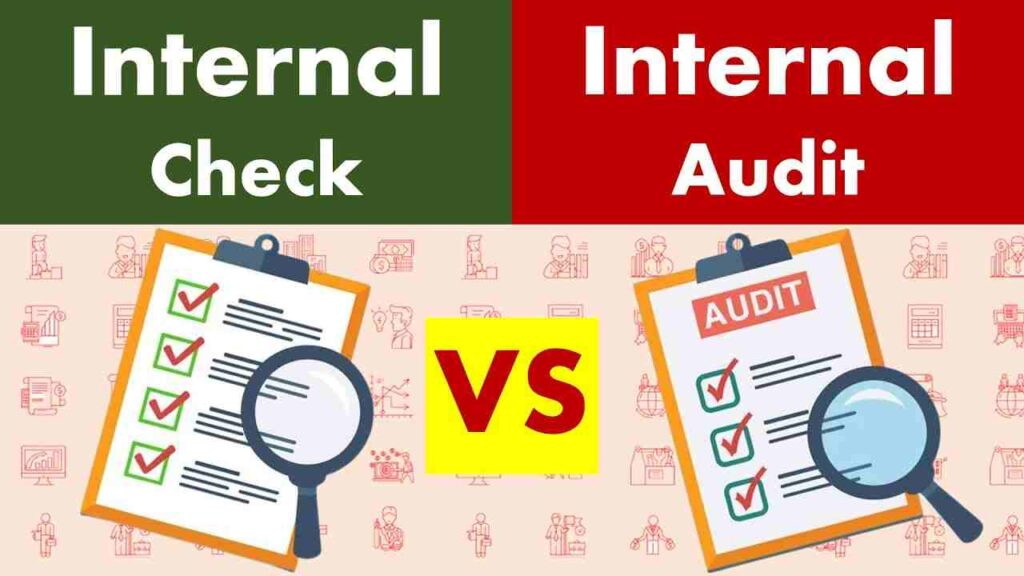
Explore 10 Key Difference between Internal Check and Internal Audit
Welcome to the world of financial accountability! In this article, we’ll delve into the intriguing realm of internal check and internal audit, exploring their distinctive roles in ensuring transparency, efficiency, and trust within organizations.
10 Difference between Internal Check and Internal Audit
Hello there, pupils! We’re going to explore the fascinating world of business today and discover two crucial concepts called internal check and internal audit. Let’s examine their main 10 Difference between Internal Check and Internal Audit so you can quickly become a rising expert!
Purpose: Internal Audit seeks to assess the effectiveness of internal controls and offer recommendations for improvement, whereas Internal Check concentrates on daily operations and ensures that transactions are recorded accurately.
Scope: Internal Check encompasses regular tasks carried out by staff members across the entire organization, ensuring that they are divided, cross-checked, and balanced. Internal audit, on the other hand, looks at the overall control systems and procedures to spot potential risks and gauge their impact on the business.
Timing: Internal Check is a continuous procedure that runs continuously as part of routine operations, assisting in the real-time error and fraud detection. Internal audit, on the other hand, looks at the organization’s operations and systems over a predetermined time period and is conducted routinely or at predetermined intervals.
The type of work: Internal Check entails customary tasks like record comparison, math verification, and balance reconciliation. Internal audit, in contrast, entails a careful review of documents, interviews, and control testing in order to offer a neutral assessment of the organization’s operations.
Submitting Line: Employees within the company typically conduct an internal check and report the results to their direct supervisors or department heads. Internal audit, on the other hand, is typically a separate department that answers directly to the organization’s management or audit committee.
Independence: As employees review the work of their coworkers, Internal Check depends on their moral character and skill. Internal Audit, in contrast, is a separate department that offers an unbiased evaluation of operations and controls.
Expertise: Internal Check requires a fundamental understanding of internal control practices and procedures, which can be acquired through organizational training. However, internal auditing demands specialized knowledge and abilities in financial analysis, risk assessment, and auditing methods.
Frequency: Internal Check is an ongoing procedure integrated into daily operations that makes sure errors are quickly found. Internal audits are periodically carried out, frequently on an annual or biennial basis, and they offer a thorough evaluation of controls and procedures.
Legal Conformity: Internal Check is primarily concerned with ensuring adherence to the organization’s internal policies, procedures, and guidelines. In addition to assessing internal compliance, internal audit also assesses adherence to outside laws, regulations, and industry standards.
Objective: Internal Check’s primary goals are to stop mistakes, find irregularities, and keep accurate records. Internal audit, on the other hand, seeks to offer an unbiased assessment of the efficiency of controls, risk management, and overall governance within the organization.
Students! The key difference between internal check and internal audit have now been explained to you. Keep in mind that Internal Check monitors daily operations while Internal Audit assesses the efficacy of controls and makes recommendations. You’ll keep learning fascinating ideas and rules as you continue to investigate the business world!
Also Read: Exploring the 10 Difference Between FIR Filters and IIR Filters